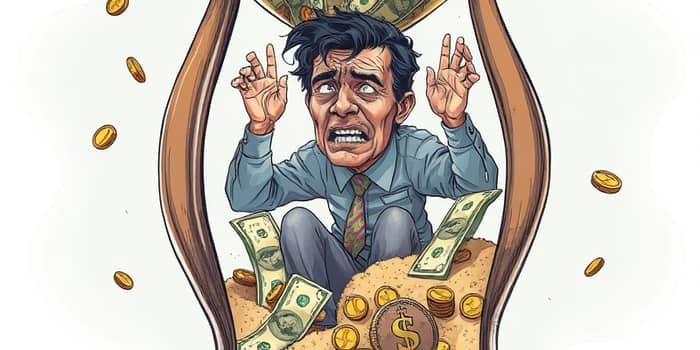
Payday loans promise fast cash when you need it, but they often lead to deeper financial struggles. Millions of Americans turn to these short-term solutions each year, only to find themselves caught in a web of mounting fees and unrelenting deadlines.
In this comprehensive guide, we’ll explore how these predatory products work, why borrowers get trapped, and what safer alternatives exist. By understanding the full picture, you can protect your wallet and your peace of mind.
Payday loans are typically small, short-term, high-interest loans designed to cover expenses until your next paycheck. They rarely exceed $500, yet carry sky-high fees and interest rates that can devastate a budget.
The borrowing process is deceptively simple. Lenders often skip credit checks and require minimal paperwork. You may hand over a post-dated check or grant electronic access to your bank account for repayment on your next payday. This quick and easy borrowing process appeals to those in urgent need, but the true cost emerges soon after.
On average, payday loans carry an astonishing APR of around 398%. In some states, like Idaho, rates climb as high as 652%. Borrowing $300 for two weeks can cost you an additional $45 to $90 in fees alone.
Most borrowers pay about $15–$30 per $100 borrowed in fees for just a two-week term. If you roll over the loan, these charges compound rapidly. Such loans are significantly more expensive than other options like personal loans or credit card advances, which typically cap APRs below 36%.
Despite these costs, payday lenders generate over $2.4 billion in fees annually from low-income borrowers in the states that allow them. In 2022, over 20 million payday loans totaled nearly $8.6 billion in principal, underscoring the scale of this industry.
A staggering 80% of payday loans are either rolled over or followed by another loan. On average, borrowers take out 11 or more consecutive loans within only a few months. This pattern creates a relentless cycle of debt.
When repayment becomes impossible, lenders may attempt repeated withdrawals from your bank account, triggering overdraft fees. Aggressive collection tactics and threats of legal action add emotional stress on top of financial strain. This repeated attempts to withdraw funds can leave borrowers overwhelmed by escalating obligations.
Default rates are alarming. One in five payday loan borrowers fails to repay on time, and more than half default on online installment loans. The result is a spiral that erodes savings, damages credit scores, and traps families in long-term hardship.
Approximately 12 million Americans rely on payday loans each year, and 75% of those are repeat borrowers. While emergencies like car repairs, medical bills, or utility shut-offs drive many to borrow, the loan’s high cost often necessitates another loan, perpetuating a vicious cycle.
Payday lending laws vary dramatically from state to state. Twelve states ban it altogether, while another 18 have strict limits or partial restrictions. Twenty states plus Washington, D.C., impose strong interest rate caps at 36% APR, shielding residents from predatory rates.
Online payday lending is on the rise, especially in Alaska and California, where digital loans now represent a majority of transactions. In states without caps, lenders face few barriers to charging exorbitant rates, leaving consumers exposed.
Credit unions often offer lower-cost financial assistance for emergencies than payday storefronts. Personal loans from banks or online lenders feature reasonable interest rates and predictable repayment schedules. Non-profit organizations can help create budgets and negotiate with creditors to avoid high-cost debt traps.
To break free from the payday loan cycle, start by building an emergency fund, even if it grows slowly. Aim to save at least $500 for unexpected expenses. This build a small emergency savings fund will reduce the urge to borrow at high costs.
Maintain a clear budget, track expenses, and explore community-based resources. If you already have payday loan debt, consider debt consolidation or speak with a non-profit credit counselor. Transparency about your financial situation and a realistic repayment plan can restore control.
Payday loans may seem like a quick fix, but their hidden costs and aggressive practices far outweigh the benefits. By understanding the risks and choosing safer alternatives, you can avoid the debt trap and secure a more stable financial future.
References













